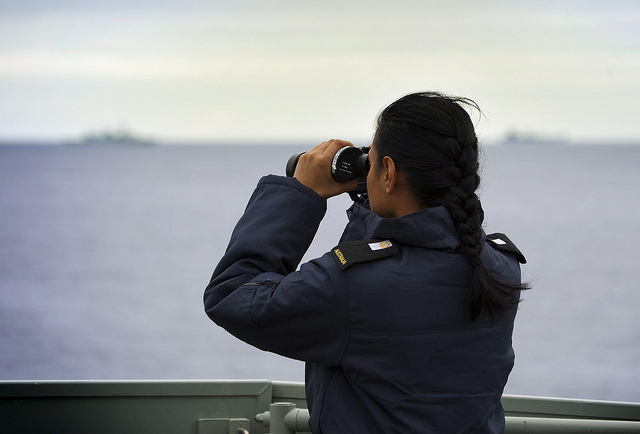
This piece is drawn from Agenda for Change 2016: strategic choices for the next government.
Australia’s law enforcement and border security operating environment is becoming increasingly complex and is evolving rapidly. For the strategic leaders of Australia’s law enforcement and border security agencies, uncertainty in the current operating environment is matched by pervasive policy and funding uncertainties.
International bodies and non-government organisations alike describe transnational, serious and organised crime (TSOC) as a threat to national security and regional stability. The threat posed to Australia’s security and interests by TSOC continues to expand and change. The increasing scope of the threat has been accompanied by an increase in the complexity of TSOC structures and activities. Syndicates rapidly acquire and employ new technologies at a rate that far exceeds that of law enforcement.
TSOC business models and their inherent flexibility afford them the opportunity to rapidly identify risks and opportunities for exploitation. These groups have consistently demonstrated the capacity to rapidly change their operations or activities and take immediate action when an opportunity or unacceptable risk arises. And they are increasingly greying the line between legitimate and illicit economies as a means of deception and profit maximisation.
Recent policy experience with TSOC issues such as ‘ice’ (crystal methylamphetamine) and money laundering have shown us that what worked in the past won’t guarantee success in the present, let alone the future. The dynamic business models used by these groups are increasingly degrading the effectiveness of law enforcement’s traditional strategies for detecting, preventing and investigating TSOC entities.
The national security policy issues addressed by Australia’s border security and national law enforcement agencies are consistently live issues for federal governments. The policy in this space is focused on the real-time disruption of pervasive TSOC threats. That means law enforcement agencies are tending more towards stopping TSOC from happening than going for arrests and prosecutions after the fact. While the latter actions are important, disruption is often a practical strategy where perpetrators are overseas, deeply hidden or in cyberspace.
The risks associated with those threats are unlikely to be completely mitigated. Yet events such as the Sydney Lindt Cafe siege has shown that the public has zero tolerance for policy failure.
Added to that complex threat mix is the reality of Australia’s border security and national law enforcement arrangements. Those arrangements are comprised of a complex framework of often overlapping jurisdictions; legacy policy issues and budgeting models; organisational cultural challenges; and stand-alone thematic strategies. In the past, expediency during policy development has called for the establishment of ad hoc taskforce arrangements to temporarily address new or emerging issues.
Despite those challenges, the border security and law enforcement agencies have consistently achieved or exceeded the performance targets in their Parliamentary Budget Statements. This isn’t surprising, given that they’ve historically been focused on achieving ‘siloed’ operational outcomes such as arrests, seizures and successful prosecutions. The organisational pursuit of key performance measures doesn’t leave much time, space or capacity to critically evaluate whether the intent of policy is being achieved. Nor do they actually measure practical crime fighting strategies like disruption, which tend to be harder to demonstrate quantitatively. For any government, change in this policy space is tough going.
With this firm grasp of the law enforcement and border security strategic and operational reality, we offer five key recommendations for government:
- The next Australian Government should consider developing a law enforcement policy statement focused on clearly articulating its strategic intent, its expectations of agencies, and the resources it will assign.
- The government should consider centralising other border security functions, such as quarantine and biosecurity, to allow for the development of a unified national border security strategy.
- The government should consider making a commitment to a specific ‘minimum spend’—perhaps in the form of a percentage of GDP based on a rational cost–benefit calculation—on law enforcement and border security.
- The government should resolve the irregular maritime arrival legacy case load.
- After the election, the government should consider reducing the pressure on border security and law enforcement agencies to increase seizure and arrest rates. Further efforts should also be made to develop broader and more relevant performance measures that are focused on strategic impacts on threats and risks to Australian communities. Enforcement performance measures should increase the attention given to non-quantitative outcomes like disruption operations in relation to TSOC.
Many of the criminal threats that Australia’s border and enforcement agencies face can be defeated individually at the operational level: syndicates can be disrupted and their members arrested. Unfortunately, despite operational successes the strategic threat level will remain unchanged: there will continue to be criminals and organised crime.
This observation isn’t fatalistic or defeatist, but instead highlights the importance of lifting the focus of border security and law enforcement to the strategic level. The aim should be to achieve effects or impacts, as opposed to merely making arrests and seizures. Fortunately this is possible in Australia because, for the most part, our national strategies in those areas enjoy bipartisan support.
Government, after the election, has an opportunity to provide further strategic policy and resource stability for its law enforcement and border security strategic leaders. That stability will provide an opportunity for these same strategic leaders to more critically evaluate their performance and develop new and innovative strategies concerned more with the safety of our communities than performance measures.

